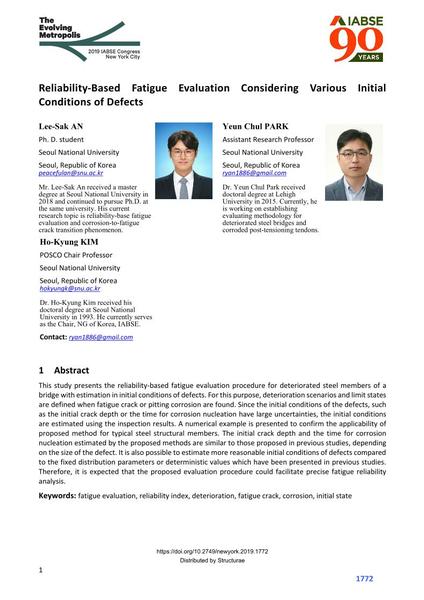Reliability-Based Fatigue Evaluation Considering Various Initial Conditions of Defects

|
|
|||||||||||
Détails bibliographiques
| Auteur(s): |
Lee-Sak An
(Seoul National University)
Yeun Chul Park (Seoul National University) Ho-Kyung Kim |
||||
|---|---|---|---|---|---|
| Médium: | papier de conférence | ||||
| Langue(s): | anglais | ||||
| Conférence: | IABSE Congress: The Evolving Metropolis, New York, NY, USA, 4-6 September 2019 | ||||
| Publié dans: | The Evolving Metropolis | ||||
|
|||||
| Page(s): | 1772-1776 | ||||
| Nombre total de pages (du PDF): | 5 | ||||
| DOI: | 10.2749/newyork.2019.1772 | ||||
| Abstrait: |
This study presents the reliability-based fatigue evaluation procedure for deteriorated steel members of a bridge with estimation in initial conditions of defects. For this purpose, deterioration scenarios and limit states are defined when fatigue crack or pitting corrosion are found. Since the initial conditions of the defects, such as the initial crack depth or the time for corrosion nucleation have large uncertainties, the initial conditions are estimated using the inspection results. A numerical example is presented to confirm the applicability of proposed method for typical steel structural members. The initial crack depth and the time for corrosion nucleation estimated by the proposed methods are similar to those proposed in previous studies, depending on the size of the defect. It is also possible to estimate more reasonable initial conditions of defects compared to the fixed distribution parameters or deterministic values which have been presented in previous studies. Therefore, it is expected that the proposed evaluation procedure could facilitate precise fatigue reliability analysis. |
||||
